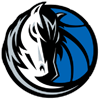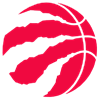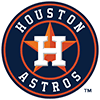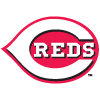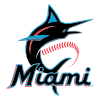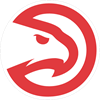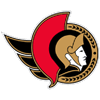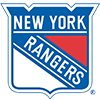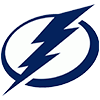Friday night: It was glorious.
I experienced one of the most rewarding feelings in all my years of playing fantasy sports. I entered six lineups across a few lower-level GPPs on FanDuel, including the $5 qualifier to the Chicago live final in August. The goal of winning is the same every time any one of us plays DFS. We all know how difficult and rare it is to come out ahead of a field of a few thousand people on a single day of action. Season-long baseball comes much more naturally to me, but I've been working hard to become a more disciplined, consistent DFS player. On Cinco de Mayo, it all came together, at least for one night. I won a seat to the Chicago live final in a field of 5,540 and won another $27,000 on $106 in entries. The live final seat gives me a 1-in-100 shot at $250,000.
My lineup-building process that day was not much different than usual other than going heavier with my core players of the day across most lineups: specifically, Paul Goldschmidt, Cody Bellinger, Curtis Granderson. One key difference that day is that I didn't continually tweak my lineups like a madman as I usually do.
I left my office to join some coworkers for a Cinco de Mayo happy hour and stayed there for a few hours without thinking about the squads I'd built for the day. Before I hit the road, I quickly perused box scores and
Friday night: It was glorious.
I experienced one of the most rewarding feelings in all my years of playing fantasy sports. I entered six lineups across a few lower-level GPPs on FanDuel, including the $5 qualifier to the Chicago live final in August. The goal of winning is the same every time any one of us plays DFS. We all know how difficult and rare it is to come out ahead of a field of a few thousand people on a single day of action. Season-long baseball comes much more naturally to me, but I've been working hard to become a more disciplined, consistent DFS player. On Cinco de Mayo, it all came together, at least for one night. I won a seat to the Chicago live final in a field of 5,540 and won another $27,000 on $106 in entries. The live final seat gives me a 1-in-100 shot at $250,000.
My lineup-building process that day was not much different than usual other than going heavier with my core players of the day across most lineups: specifically, Paul Goldschmidt, Cody Bellinger, Curtis Granderson. One key difference that day is that I didn't continually tweak my lineups like a madman as I usually do.
I left my office to join some coworkers for a Cinco de Mayo happy hour and stayed there for a few hours without thinking about the squads I'd built for the day. Before I hit the road, I quickly perused box scores and noticed that my near-minimum salary Granderson had already gone yard and that Goldy had crushed two into the bleachers of Coors Field. When I got home, I looked at the FanDuel live-scoring app and saw that I was ranked among the top 10 in the qualifier. But I was 30 points back of the leader, and my pitcher, Kenta Maeda, was pulled from the game with the Dodgers down 2-1, so I wouldn't be gaining four points for a win. Cody Bellinger hit one out of the park in the fourth, but I would still need a miracle between him and my other remaining player, Rougned Odor, who was 0-for-5 as the Rangers and Mariners headed into extra innings.
But miracles do happen.
Bellinger cracked a stunning three-run bomb off the second pitch in the top of the ninth. I didn't want to look at the live scoring until the games were over, but I knew I'd probably need Odor to go deep himself for a chance to win. Odor hit an infielder dribbler in the 10th inning and was quickly thrown out, but the game extended into the 13th and I knew Odor would have one more crack at it.
Perhaps it was just in my own mind, but everything around this at-bat seemed ominous and in slow motion. Inexperienced pitcher Emilio Pagan seemed to be taking his sweet time, as if he already knew the result of this at-bat. Fellow RotoWire writer Scott Jenstad texted me at that time and simply said, "You know Odor is taking this fool deep." Later on, Scott mentioned that his wife found it eerie how sure he was that Odor was going to do it. As for the ominous part, I noticed that the game was in the 13th inning, the pitcher's name was Pagan (pronounced differently, of course), and Pagan and Odor's jersey numbers added up to 66 (not quite 666, but you get the picture). When Odor connected on that 1-0 pitch, I knew that was it.
I quietly pulled a Kip (from Napoleon Dynamite)-style fist pump, then checked the app and realized that I'd won about $15,000 more than I thought I would because of my other entries with that lineup. I'm ecstatic to have qualified for the live final, but I don't plan to alter anything in terms of my process or bankroll management.
DFS in April was rough, with frequent feelings of dejection when all of my time spent on putting lineups together would end up in losing days because of my GPP-centric style of play. I'd consistently mistime players by a day and get blown up by pitchers, and it was really taking a toll on me. That's the thing about DFS. Just like season-long, it's a grind with so much more struggle than glory.
Just like hitters in MLB, it's easy to allow yourself to start "pressing," which can get you into a deeper rut and cause a loss of confidence. Cold streaks can also lead one to move away from one's process and take miscalculated risks that lead to more losing and frustration. Of course, Lady Luck played her part on Friday, but I also trusted my process and core players, and it paid off. There's no doubt that DFS baseball is hard; I may not have another day like this all season. What I do know is that the more we learn to trust ourselves, our research and our process, the better and more consistent we'll get. That goes for DFS, season-long and anything else we put our time into in life.
RISERS
Marwin Gonzalez, 1B/3B/OF, HOU
Gonzalez had a massive week, hitting .500 with five homers, nine RBI and a steal in just five games. He was scooped up in all 15-teamers without hesitation and had some solid bids thrown his way in 12-team leagues. The multi-position eligibility is certainly a bonus, but it would not surprise me in the least if Marwin the Masher found his way back onto waiver wires in a couple of weeks. Gonzalez is a career .258 hitter with an OBP mark barely over .300 over 550 career big-league games. He has averaged 120 games over the last three seasons, but his 13 homers in 2016 is his career high. Gonzalez has already hit nine in just 86 plate appearances, and it's hard to imagine that a guy with a .144 ISO over his career can bump that figure over .400 over the course of the season. Marwin himself is shocked by the recent surge, claiming, "I'm not a power hitter." His hard-hit rate remains in the low 30s, as it has over most of his career, and the bump in his flyball rate will likely see some regression as well. He's a big asset of A.J. Hinch's, and with Carlos Beltran and Josh Reddick no lock to stay healthy, Gonzalez should continue to serve as the super-utility guy. He'll easily post his best numbers across the board this season, but I'd expect maybe 12 more dingers this year, with his 13 percent walk rate dipping back down into the single digits. Enjoy the ride if you own him, but be ready to cut bait.
Yonder Alonso, 1B, OAK
My outlook for Alonso for the rest of the season is a bit more optimistic than it is for Gonzalez. The 30-year-old's next home run will mark the first time in eight seasons he's hit double digits. Sure, 2016 was only the second season that saw him play in more than 100 games, but Alonso has made a name for himself as a contact-hitting, power-deficient first baseman in the James Loney mold. Perhaps you've already read Dave Cameron's Fangraphs piece discussing Alonso as the ideal model for this new statcast/exit velocity revolution. The piece mentions Eno Sarris' preseason conversation with Alonso, who stated his desire to become more of a power hitter and that he planned on retooling his swing to hit more flyballs. Cameron also discusses Alonso's .400-plus xwOBA (expected weighted on-base average), which nearly mirrors his actual wOBA to date. Alonso is hitting the ball a bit harder than last year, as his average exit velocity has increased a few ticks and his average launch angle has nearly doubled from last season's 10 degrees. Of course, his strikeout rate has climbed notably as well (from 14 percent to 23 percent), but that comes with the territory. Put it all together, and you have someone who has consciously altered his approach, succeeded at it, and become fantasy-viable. O.Co Stadium is certainly no power haven, but five of his nine bombs have come at home. Alonso is a good baseball player who should be a welcome addition to anyone who snagged him this week as long as expectations of a 30-homer season are kept in check.
Tim Beckham, SS, TB
I added Beckham in a couple of leagues with a solid lead in batting average on teams that keep getting hit with the injury bug at this position. With much of our attention focused on average exit velocity, launch angles and hard-hit rate, it's hard not to notice Beckham finally showing some of that first-overall-pick promise after two partial seasons mired in disappointment. Beckham ranks fifth in baseball with a 51 percent hard-hit rate, and that alone puts him on the radar for DFS contests and seasonal leagues. He's a true swing-for-the-fences type with awful plate discipline (4.5 percent walk rate, 34.5 percent strikeout rate), and with this comes a paltry batting average -- he's hitting .264 with a .355 BABIP, so he's about at his ceiling in that category. Beckham's boom-or-bust nature keeps him in the bottom third of the Rays' lineup on most nights, dinging his fantasy value. He'll be a guy added and dropped from 12-teamers over the course of the season, but Beckham serves as a solid source of power and could easily finish the year with 20 homers. It's worth noting that although Beckham flashed some speed in the minors, he's stolen just six bags in 181 big-league games to this point.
Alex Cobb, SP, TB
Last week must have surprised plenty of folks, but Cobb looked damn sharp in both of his outings, lasting eight and six innings, respectively, against the Blue Jays and Marlins. He managed just five whiffs, but Cobb allowed only eight total hits and two earned runs (which came off one swing of the bat by the Jays' Darwin Barney). It's been a long comeback for the 2015 Tommy John victim, who struggled in his five starts last season and early on in this one. Cobb's fastball velocity has crept back up to around the 91 mph we saw prior to his surgery, and he appears to have a better feel for his changeup. We're still going to avoid Cobb for starts like this week's (at Boston), but we can use him for outings at home and on certain two-start weeks. It's hard to draw a line with waiver-wire-esque starting pitchers in 12-teamers, but Cobb is someone I expect to improve as the season moves forward. He's 29 now, but let's not forget his back-to-back seasons with ERAs under 3.00 in 2013 and 2014 – enough to earn him top-20 SP status in drafts prior to the bombshell about his surgery in 2015.
Nathan Karns, SP, KC
I'm ecstatic to see the recent results, but unfortunately, I won't be benefiting. I gave Karns a long, hard look for my NFBC Main Event team two weekends ago, and his six scoreless innings with seven strikeouts put him on everyone's radar with a two-start week on tap. This past weekend, I whiffed on all six of my bids for Karns, including two spots where I bid the same amount as the winner, but lost due to standings tiebreakers. I believe I truly missed out on someone who's going to be fantasy relevant this season. Karns had a nice 2015 season with the Rays in which he averaged nearly a strikeout per inning along with a respectable 3.67 ERA in 26 starts. He struggled mightily last season with the Mariners, spending part of it in middle relief. Karns came to the Royals in the offseason, beat Travis Wood out for the fifth spot in the rotation, and struggled in three of his first five starts. He works primarily with a fastball in the 92-93 mph range as well as a nearly unhittable knuckle-curve (.133 oBA in 38 PA) and a solid changeup. Most importantly, Karns has a top-rated infield defense behind him, and the outfield defense is not too shabby either. He kicked his two-step off this week by striking out 10 Rays, and Karns draws the Orioles this weekend. Jump on Karns if he's still available in 12-teamers, especially if you starters to the DL last week.
FALLERS
Kevin Kiermaier, OF, TB
Kiermaier has been nothing short of a disappointment through the first five weeks of the season. I'm not even close to dropping him in my 12-teamers, though I'll admit he's ridden the pine these last couple of weeks. Kiermaier received much helium all throughout March drafts, rising as high as 10th-round status coming off a sneaky-good partial season (12 homers, 21 steals in 105 games). My expectation was for Kiermaier to hit 10 long balls and steal 25 to 30 while carrying the obvious batting-average concerns of a career .250 hitter. He's known as one of the league's best defensive center fielders; as such, I expected he'd maintain a spot in the lineup every day regardless of offensive slumps. Unfortunately, Kiermaier has deservedly lost his leadoff spot and has occasionally taken a seat on the bench against southpaws. He's striking out at a rate over 20 percent for the first time in his career despite maintaining last year's 10 percent walk rate, and he's barely hitting over the Mendoza line. Kiermaier will hit his stride and find his way back to the top of the lineup at some point, so stay the course.
Jose Bautista, OF, TOR
Many of us were already hesitant with Bautista after his lowest home run total (22) since 2009 and .234 batting average. As such, Bautista's ADP during the spring fell into a reasonable range (around 90 to 120 overall). I recall taking a full minute for my pick deciding between him and Miguel Sano before eventually selecting the younger player with more upside. So far, Bautista's performance has been beyond dismal. Just nine RBI hitting out of the two-hole and striking out at a 30 percent clip, which is about 10 points over his career average. He's looked utterly abysmal at the plate, swinging at pitches like an inexperienced young buck. It's tempting to consider dropping him, but I don't think that's the right move. Perhaps there's only a small correlation, but I expect Bautista to experience a couple of hot surges this season, starting not long after Josh Donaldson returns to the lineup. Bautista will be hard-pressed to raise that .174 average into respectability, but if you can stomach that, you should get 20 home runs with 70-plus RBI from this point on. At the end of the season, we're going to say he burned us at his price tag, but he's not entirely devoid of his skillset to the point that he's droppable.
Brandon Belt, 1B, SF
It's been a tough few weeks for Belt, who started the season off hot, crushing three homers with seven RBI; unfortunately, he's hit one long ball over the last month and managed just three hits in 19 at-bats last week. Belt's hard-hit rate is down to around 30 percent after he posted marks between 36 and 40 percent over the last two season. The most impressive part of his game is his 17.2 percent walk rate, while his ISO and just about every other metric is within range of what we've grown accustom to with Belt. That early surge made us believe that perhaps the breakout season was finally here. I still believe Belt will hit the 20-homer mark for the first time in his career and set a career high in runs scored. We can bench him on weeks or half-week periods with predominantly southpaws on the mound, given the depth at CI this season.
Robert Gsellman, SP, NYM
I did drop Gsellman from a couple of NFBC 12-teamers out of necessity due to his at-Milwaukee start this week and viable waiver-wire options like Trevor Cahill and Karns to bid on. But I held him where I could because I believe we've seen the worst already and the curse of the Mets won't hover over him for too much longer. Gsellman has truly been unlucky, and we can point to a few factors: a 57 percent strand rate, a .349 BABIP, and an xFIP (4.06) much lower than his ERA (6.54). Gsellman simply hasn't been generating whiffs, but he's maintained last season's velocity and doesn't appear to be hiding any kind of injury; mostly, he just hasn't been as effective at changing speeds and keeping hitters off balance. I can't blame you for dropping him in 12-teamers, given the need to stream for strikeouts, but if you can afford to hold Gsellman, I certainly would.








